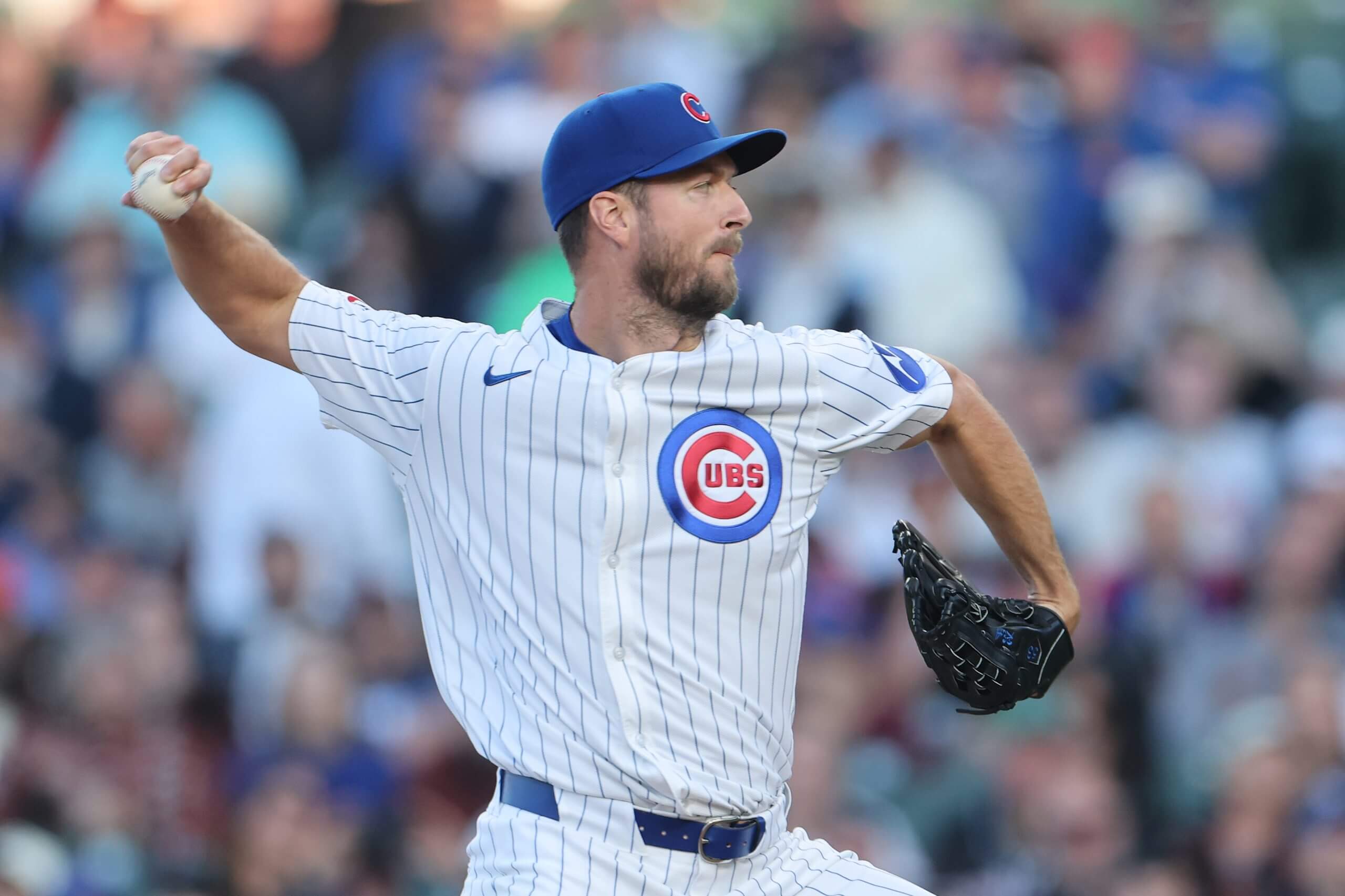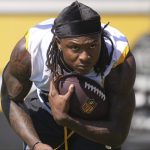
The Chicago Cubs’ solid start to the season has earned multiple players plenty of headlines. Pete Crow-Armstrong has quickly become a national star and added to his status with a tying home run Sunday in an eventual 6-2 road loss to the New York Mets. Kyle Tucker has slowed after a red-hot start, but he’s the star bat the lineup so desperately needed.
Advertisement
Even Matthew Boyd has shone as the Cubs’ top two starters — Justin Steele and Shota Imanaga — have been felled by injuries. Boyd gave up two runs in six innings of work Sunday afternoon, allowing just six hits while striking out eight and walking none. On the season, he has a 2.78 ERA with a 23.4 percent strikeout rate and a 6.7 percent walk rate.
Despite losing their second series in a row, the Cubs are still five games above .500 (23-18) and in first place in their division. Entering play Sunday, Cubs opponents had a .555 winning percentage, nearly 30 percentage points higher than the second team on the strength-of-schedule list. That’s a larger gap than the second and 18th teams on the list. The schedule lightens significantly, however, as their opponents the rest of the way have a .462 winning percentage, which would be the easiest remaining schedule in baseball.
That the Cubs are still holding strong despite such a difficult schedule and two key injuries to their starting staff says a lot about their resilience. With the schedule easing a bit, it feels like a good time for them to go on a run.
Though the big names have delivered, the Cubs have needed some grinder-like performances from players who haven’t been getting as much attention. Here are three key players who have flown under the radar through the first 41 games.
Colin Rea
Rea is using his four-seamer at a career-high rate of 52.9 percent. The last two seasons, he used it under 20 percent of the time, and his previous high was 39.8 percent in 2020, when he tossed just 14 innings with the Cubs. It’s just never been a pitch he’s had much confidence in.
But last season with the Milwaukee Brewers, Rea got advice from a former Cubs pitcher that may have keyed his hot start this season. Last summer, veteran pitcher Wade Miley suggested to Rea that he move to the first-base side of the rubber. After an awful September, Rea decided to take Miley’s advice this past winter. The results have been stunning.
“I felt like it cleaned up my delivery a little bit,” Rea said. “My direction home was a little better. On the third-base side, I had to open up my front shoulder a little bit earlier to get that pitch glove-side. Now that I’m on the first-base side, my direction is more towards home, and I’m able to stay closed longer.”
Advertisement
Rea says his fastball has more “life,” something he believes can’t be measured. Essentially, he described it as deception. By staying closed longer, opponents have a tougher time picking up the four-seamer, and it ends up getting on hitters quicker.
The Cubs’ pitching coaches have encouraged Rea to use his four-seamer more. Though the San Francisco Giants got hold of a few last week, it’s still been his most valuable pitch. His sinker used to be his most-used pitch and, often, by Statcast’s Run Value metric, his least effective offering. Now he’s leaning on the four-seamer, and it’s been incredibly valuable for him.
“It was just (the coaches) reminding me to not be afraid to use it,” Rea said. “The results we’ve gotten with it so far have given me confidence to go to it.”
Without Rea’s standout performance thus far — a 2.43 ERA in 29 2/3 innings — the losses of Steele and Imanaga would be hurting much more.
Ian Happ
Many numbers are fascinating about Happ’s solid start to the season, but his 18.7 percent strikeout rate stands out. Once a big swing-and-miss guy, Happ has turned himself into a sub-20 percent strikeout hitter. He’s doing that while maintaining a high walk rate (12.8 percent) and giving the Cubs a stable leadoff presence who is setting the tone for a great offense.
“I think I’m doing a good job of discipline,” Happ said. “Swinging at pitches I can hit and putting those ones in play. I’m still having long at-bats, still walking at a high clip, so I’m very happy about it.”
Early on, Happ’s ISO is just .113, which would be the lowest of his career. Some would suggest that more contact has led to a drop in power. But the reality is the quality of contact is on par with most of Happ’s prior seasons. His .450 xSLG is nearly 70 percentage points higher than his .381 slugging percentage.
Advertisement
“It just tells me I’ve been hitting the ball hard,” Happ said. “The ground-ball rate’s low, I’m hitting the ball hard in the air — all those things are good. The slug isn’t matching the expected numbers or how I feel it’s coming off the bat. But I think that’s a good sign that it’s there and will be there.”
Happ missed the last two games of the Mets series with oblique pain. Manager Craig Counsell told members of the media in New York that Happ was going to go through his normal work Sunday and remains day to day. Though the Cubs have outfield depth with Seiya Suzuki and more young talent in the minors, losing Happ for an extended period would sting. He might not be grabbing much attention, but he’s been as steady as they come at the top, and it seemed like the power was about to come as well.
Brad Keller
Of pitchers who have tossed at least 10 innings, Keller leads the Cubs with a 27.3 percent strikeout rate. But it doesn’t stop there, only Gavin Hollowell (7.7 percent) has a better walk rate out of the current bullpen than Keller’s 7.8 percent. Who leads the staff in ground-ball rate? Keller, at 59.2 percent. He misses barrels, gets weak contact and just does it all.
“To have good seasons, you need some surprises,” Counsell said. “From the start of spring training, Brad’s been a really pleasant surprise. In spring training, we thought we had something there, and I think he’s continued to deliver on that.”
Despite being a starting pitcher for much of his career, Counsell trusts Keller in all sorts of situations. Keller has had one rocky outing, with a lot of bad batted-ball luck baked in as well, but has otherwise been up to the challenge. Counsell has such high expectations and a strong belief in Keller, so he’s not willing to settle for what he’s done so far.
“I still think Brad’s got more in him,” Counsell said. “We’re putting Brad in a lot of new experiences.”
Keller has come in as an opener, relieved with runners on base in a big situation, worked high-leverage innings late in close contests and been asked to get more than three outs. These are different tasks than he’s ever been asked to do consistently in the past, and it takes experiencing it to really know what it’s like. So far, he’s passing these tests with aplomb and looks like one of the most reliable and trustworthy arms on the staff.
(Top photo of Brad Keller: Gregory Fisher / Imagn Images)
This news was originally published on this post .







Be the first to leave a comment